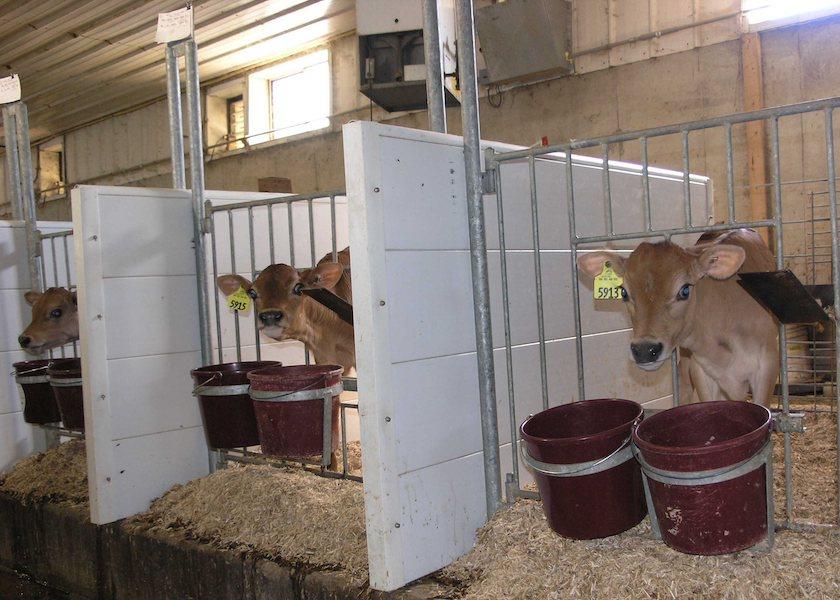Which Jersey Steer Has More Potential? (Hint: It’s not the Purebred)

Unfortunately, it’s become pretty well-known that Jersey bull calves don’t hold much value in the sale barn. These days, it’s hard enough just to get a decent price for Holstein replacements, let alone their brown male counterparts. All too often, we hear of producers taking a loss at the sale barn just to get Jersey bull calves off the farm. But does it always have to be like this? Not necessarily.
While crossbreeding lesser performing dairy cows to beef semen is certainly nothing new in the dairy industry, one Ohio State University study has shown that crossing Jersey cows to beef semen does help increase the value of Jersey bull calves.
They study was conducted to see how purebred Jersey steers performed in a feedlot setting compared to Jersey beef steers.
Crossbred Jersey steers improved economically relevant production parameters of feedlot performance, carcass quality, carcass yield, and instrumental predictors of eating quality compared with purebred Jersey steers. The crossbred Jersey steers were sired by Angus, SimAngus, and Red Wagyu bulls that were selected for their marbling ability. During the study, feedlot performance of the steers was assessed, the cattle were harvested, and the carcass characteristics, retail yield, and meat quality were measured.
The Meat of the Matter
After the steers were processed, it was determined that the crossbreds had a greater average daily gain (ADG) than the purebred steers and also had an improved dry matter feed intake with a more desirable gain to feed ratio. Additionally, the crossbred cattle had greater carcass weights compared to purebred Jersey steers, with 20% of Jersey steer carcasses weighing under 600 pounds in this study, according to Michigan State University dairy extension.
Not only did crossbred Jersey steers produce more weight, but they were more efficient in doing so. The researchers found that the crossbred cattle required fewer days on feed to reach their final weight and had a greater dressing percentage, backfat thickness, and marbling score compared to purebred Jersey steers.
Improved Economics
At the conclusion of the study, it was determined that crossbred Jersey steers had a higher boxed beef value than the purebred animals. Furthermore, the researchers found that it required less input cost to raise these crossbred cattle compared to true Jersey steers. As a result, the breakeven price that could have been paid for the cattle in the study was approximately $0.50 per pound greater for crossbred feeder calves (weighing 450 pounds) compared to the purebred Jersey steers, according to Michigan State University.
While the value of a crossbred Jersey steer is not predicted to add a significant amount of money back into your checkbook, it can help prevent the frequency of producers taking a loss at the sale barn. At the end of the day, crossbred Jersey steers were more profitable compared to purebreds due to their more desirable feedlot performance, carcass yield, and carcass quality.







